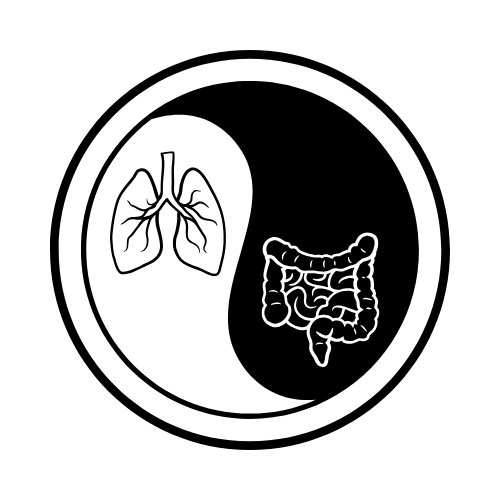The TCM Connection Between the Lung and Large Intestine
Traditional Chinese Medicine (TCM) is a holistic healing system that has been practiced for thousands of years. It focuses on restoring balance and harmony within the body by supporting the natural flow of energy, known as Qi (pronounced “chee”).
Qi is the vital life force or energy that flows through the body, powering every function and sustaining life. When Qi is balanced and flowing smoothly, the body thrives.
TCM views the body as an interconnected whole, where physical, emotional, and environmental factors all contribute to overall health. Using tools like herbs, acupuncture, movement (like tai chi), and dietary therapy, TCM aims to strengthen the body’s natural ability to heal and maintain wellness.
In traditional Chinese medicine (TCM), the body is seen as an interconnected network of energy systems. One of the key frameworks is called Zang Fu theory, which describes how organ systems are paired to work together. Among these pairs, the Lung (Yin organ) and the Large Intestine (Yang organ) are closely linked, forming a dynamic duo responsible for maintaining healthy energy flow between the body's interior and exterior.
Understanding Yin & Yang
Yin and Yang are complementary forces that describe how energy flows and balances in the body and the natural world. In TCM, they represent opposite but interconnected qualities; Yin is cooling, nourishing, and inward, while Yang is warming, active, and outward. Health and wellness come from maintaining harmony between Yin and Yang, allowing the body’s energy (Qi) to flow smoothly and all organ systems to function in balance.
Yin: The calm, cool, nurturing, and inward energy in nature and the body. It represents rest, stillness, and substance.
Yang: The active, warm, stimulating, and outward energy in nature and the body. It represents movement, action, and activity.
Yin |
Yang |
|
Night |
Day |
|
Cool |
Warm |
|
Rest |
Activity |
|
Inward (internal) |
Outward (external) |
|
Moistening/nourishing |
Drying/energizing |
|
Stillness |
Movement |
|
Substance (what something is made of) |
Function (what something does) |
Understanding the Zang Fu Organ Pairing
In TCM, the Zang organs are considered more Yin in nature and are associated with storing and regulating vital substances, such as Qi (energy), blood, and body fluids. Fu organs are more Yang and are responsible for transforming and transporting substances.
The Lung and Large Intestine form one of these pairs, and their energetic connection is thought to link respiration (breath) and elimination (release).
Did You Know?
The Lung is often referred to as the “delicate organ” in TCM because it is the first point of contact with the outside world through breathing.
How the Lung and Large Intestine Are Connected in TCM
In traditional Chinese medicine, the Lung (Yin organ) and the Large Intestine (Yang organ) form a paired organ system within the Metal element. This pairing reflects their complementary roles and energetic relationship.
Lung Functions:
- Governs Qi (vital energy) and respiration
- Controls the skin and body’s protective energy (Wei Qi)
- Opens to the nose
- Emotionally associated with grief
Large Intestine Functions:
- Governs elimination and movement of waste
- Works with the Lung to maintain the flow of fluids and Qi
-
Clears what the body no longer needs
The Connection:
-
The Lung descends Qi and disperses fluids throughout the body. If Lung Qi is weak or blocked, the Large Intestine may have difficulty moving waste efficiently.
- Conversely, if the Large Intestine is sluggish or stagnant, it can obstruct the Lung’s ability to disperse energy and fluids.
- This relationship also links respiration and elimination, showing how the body manages what comes in (air) and what goes out (waste).
Did You Know?
In TCM, the Lung and Large Intestine are considered part of the Metal element, which symbolizes structure, clarity, and the ability to let go. Maintaining balance in this organ pair supports both respiratory and digestive harmony.
🌿 Lung ↔ Large Intestine (Metal Element) Quick Reference
Organ |
Type |
Primary Functions |
Associated Emotion |
Notes / Tips |
|
Lung |
Yin |
Governs Qi, respiration, disperses fluids, protects skin |
Grief, sadness |
Breathwork and hydration support Lung Qi |
|
Large Intestine |
Yang |
Governs elimination, moves waste, and helps clear what’s not needed |
N/A |
Fiber-rich foods and gentle movement support healthy function |
|
Connection |
– |
Lung Qi descending aids elimination; balanced Qi supports both organs |
– |
Emotional awareness and energy balance help maintain harmony |
|
Element |
Metal |
Structure, clarity, letting go |
– |
Seasonal focus: Autumn; can reflect on release & renewal |
How the Lung and Large Intestine Support Each Other
TCM teaches that the Lung governs Qi and controls the skin and body’s protective energy (Wei Qi), while the Large Intestine regulates the movement of waste and supports clear elimination. If the Lung is weak or Qi is stagnant, the Large Intestine may also struggle to function correctly, and vice versa.
For example, emotional stress or grief (an emotion tied to the Lung in TCM) can sometimes show up as sluggish digestion or irregular elimination. Similarly, a buildup in the Large Intestine can lead to a sense of heaviness or reduced vitality in the Lung’s energy.
Signs of Imbalance in the Lung–Large Intestine Pair
TCM looks for energetic patterns rather than isolated symptoms. Some possible indicators of imbalance between these organs might include:
- Feeling sluggish or weighed down
- Dry skin or dryness in the nose
- Irregular elimination or bloating
- Feeling emotionally “stuck” or low in motivation
- Frequent colds or low protective energy (Wei Qi)
Did You Know?
The Lung is called the “canopy” in TCM because it is thought to spread Qi and fluids throughout the body, like morning dew.
How to Support Harmony Between the Lung and Large Intestine
Here are a few gentle, supportive practices to encourage balance in this organ pair:
- Breathwork: Deep, slow breathing exercises help strengthen Lung Qi and promote relaxation.
- Movement: Gentle stretching, walking, or Qigong can help keep Qi and digestion flowing.
- Fiber-rich whole foods: Support healthy elimination to keep the Large Intestine moving.
- Hydration: Fluids moisten both the Lung and Large Intestine, which are prone to dryness in TCM.
- Emotional release: Journaling or talking with a friend can help release stored emotions (like grief) that may affect the Lung.
FAQ: Lung and Large Intestine in TCM
Q: Why are the Lung and Large Intestine paired in TCM?
A: They are paired because they work together to manage the boundary between the inside and outside of the body. The Lung takes in air from the outside world, and the Large Intestine releases what the body no longer needs.
Q: Can emotions affect this organ pair?
A: Yes. The Lung is connected to grief in TCM, and unprocessed grief can influence energy flow, which may indirectly affect the Large Intestine.
Q: Are there herbs used to support this pair?
A: TCM practitioners sometimes use gentle herbs to support Lung Qi and promote regular elimination, but these should be chosen by a qualified herbalist based on individual patterns.
Remember: It’s About Balance, Not Perfection
When we understand the interconnectedness of the Lung and Large Intestine in TCM, it reminds us that our body works as a unified whole. By supporting healthy breath, movement, and emotional well-being, we can also help support the flow of Qi between these vital organ systems.









Leave a comment
All comments are moderated before being published.
This site is protected by hCaptcha and the hCaptcha Privacy Policy and Terms of Service apply.